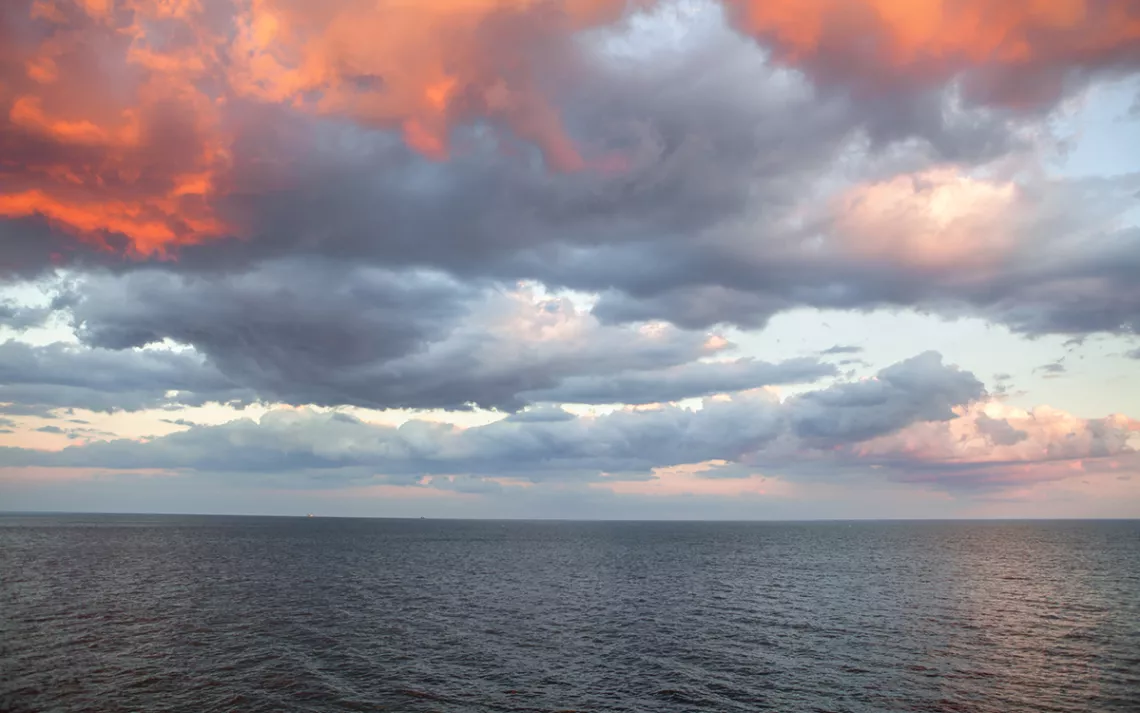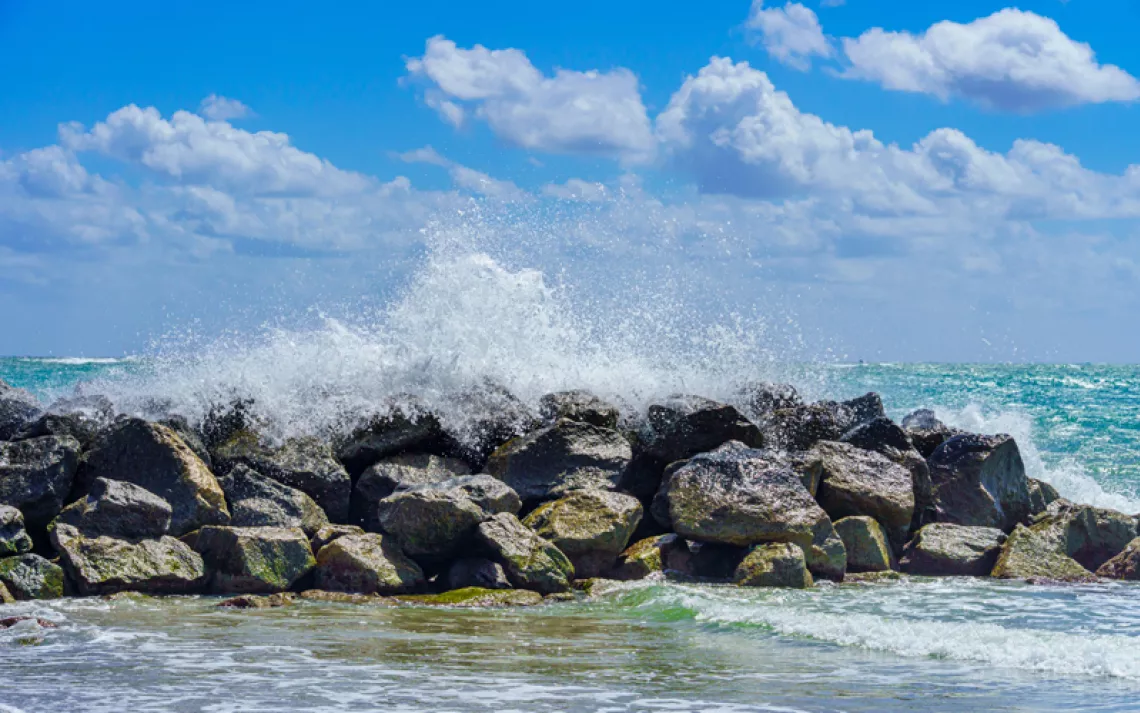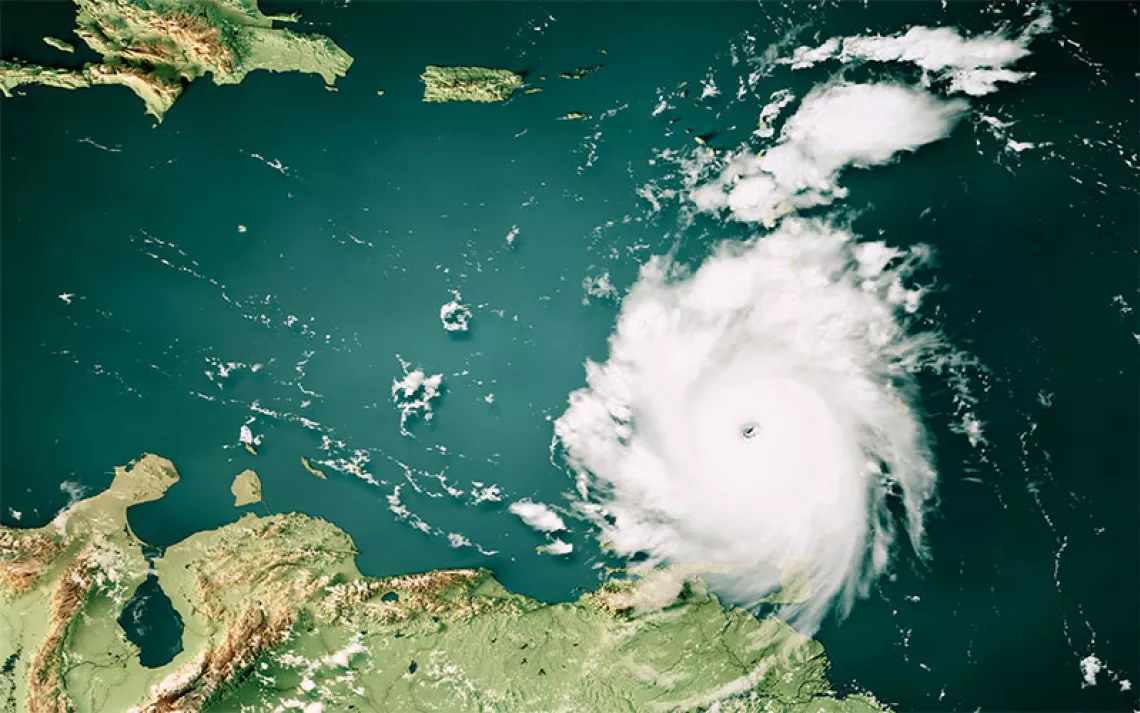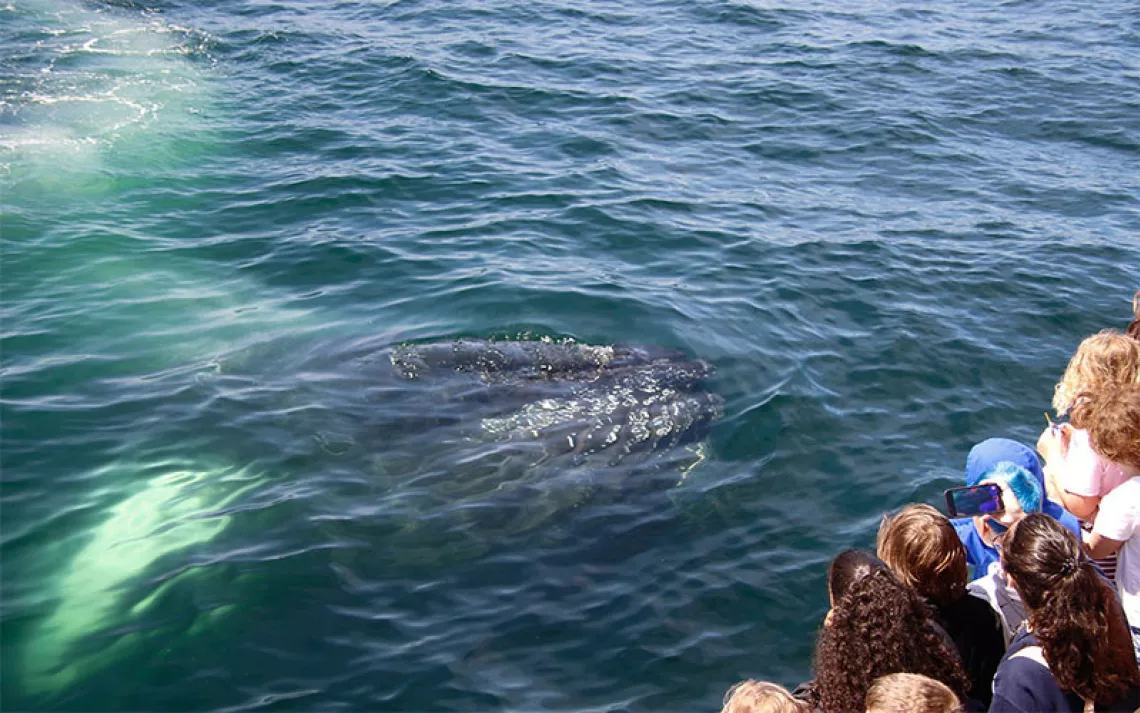10 Ocean Issues You’ll Be Hearing About in 2022
From deep-sea mining to clashes over migrants, it’s shaping up to be a year of blue issues

Photo by RussieseO/iStock
The ocean is in trouble, and people know it. The last major survey on public attitudes, conducted two years ago, found 73 percent of Americans thought the ocean’s condition had worsened in the previous decade. Asked what the major threats are, however, they tended to focus on a few familiar issues such as plastic pollution (96 percent), offshore oil drilling (74 percent), and industrial overfishing (70 percent).
Yet many other problems trouble our blue planet. Some—rising sea levels, more frequent coastal flooding, and intensified hurricanes—break down the distinction between climate and ocean issues. Here are 10 further emerging blue issues that you’ll be seeing in the news in 2022.
Deep-sea mining
Since the 1970s, there’s been talk of mining the potato-size, mineral-rich nodules that cover large swaths of the deep ocean. But only recently has the industrial-scale mining technology, like underwater bulldozers and suction-hose robots, evolved far enough to make it financially feasible. The UN’s International Seabed Authority has already granted 18 exploration permits and is supposed to set regulations for commercial exploitation by 2023. Some of the mining companies argue that “harvesting” ocean minerals is essential for green technologies like electric cars and storage batteries for wind and solar power. But hundreds of scientists and ocean explorers have called for a moratorium on mining until we have a better understanding of deep-ocean ecosystems, their living denizens, and their role in the carbon cycle. A number of companies including Google, Volvo, BMW, and Samsung have joined in the call for a moratorium, saying they will not purchase any deep-sea minerals until the potential impacts of the mining are known.
Offshore wind
With the Biden administration supporting a plan to develop 30 gigawatts of offshore wind by 2030 (enough to power over 22 million homes), the first large wind projects have begun going through the Interior Department’s permitting process, including public hearings. There’s now a real possibility of seeing offshore energy production quickly shift from oil and gas platforms in the Gulf of Mexico to offshore wind turbines in the Mid-Atlantic, with its shallow, gently sloping continental shelf, strong offshore winds, and close access to large urban consumer energy markets. Opposition to the plans ranges from impacts on the fishing industry and migratory whales to coastal habitat being altered by fabrication facilities, ports, and the onshoring of cables. Also, going back to a turn-of-the-21st-century battle over placing wind turbines off Cape Cod, there is deep suspicion of industrialization of the ocean by some coastal residents, whose fear is less NIMBY than NOBO—“Not On My Bay or Ocean.”
Marine heat waves
Extreme ocean warming of 4°F or more above normal has become common and extensive worldwide in recent years. The North Pacific “warm blob” lasted from 2013 to 2016 followed by additional marine heat waves in 2017, 2019, and 2020. These ocean hot spots contributed to toxic algal blooms that stretched from Alaska to Baja California, Mexico. In 2021, a coastal heat wave in the Northwest (with temperatures in Portland reaching 116°F) contributed to the die-off of billions of intertidal creatures. Marine heat waves have also led to mass die-offs of crabs and kelp forests and the shut down of commercial fisheries. Warming waters off Florida have supercharged toxic algae, killing billions of fish, turtles, and marine mammals, sickening people and damaging the economy.
Saltwater intrusion
The flooding of low-lying coastal areas during storm surges and king tides is the most visible form of saltwater intrusion. But it also occurs when warming, rising ocean water infiltrates freshwater aquifers and coastal groundwater. This is happening now more rapidly than at any point in recent history. Saltwater intrusion pushing up from below accounts for the “sunny-day flooding” that’s now a common occurrence in Miami Beach, Charleston, Hampton Roads, Annapolis, and other coastal towns. It has also led to populations being displaced due to freshwater contamination and root rot of crops such as sugar and coconut in island nations and territories including Fiji, Tonga, and French Polynesia.
Saltwater is also highly corrosive to metal and cement and could impact coastal development in the US, particularly in Florida with its highly porous limestone ground. If a federal accident report from the National Institute of Standards and Technology finds saltwater intrusion contributed to the deadly July 2021 collapse of a condominium in Surfside, Florida, it could have massive implications for millions of residents of the Sunshine State.
Migrant and military conflicts
The increasing number of climate refugees and the deaths at sea of migrants trying to raft to Greece from Turkey, to Italy from North Africa, and across the English Channel reflects a global problem not seen since some 800,000 “boat people” took to the sea from Vietnam in the mid-1970s. Unlike the pirate problem off the Horn of Africa in the early 2000s, which was largely resolved by a cooperative approach among the navies of many nations, at-sea migrant flows are generating increased conflict. These include confrontations between national coast guards trying to block migrants and nonprofit groups trying to provide aid to the migrants.
At the same time, increasing competition for ocean resources like oil, minerals, fish, and trade routes is increasing the potential for military conflicts at sea. New flash points include the Arctic Ocean, where Russia is building up its military presence in newly ice-free waters. In the South China Sea, the People’s Republic of China, with a rapidly expanding naval presence, is making claims on the exclusive economic zones of the Philippines, Brunei, Malaysia, Taiwan, and Vietnam. To strengthen its claims, China has destroyed a number of coral reefs and atolls to build up artificial islands, rejecting a World Court ruling against the practice. Meanwhile, the US, working with regional allies, is stepping up its military presence in the western Pacific and the South China Sea.
Global decline of coral reefs, kelp forests, and phytoplankton
Recent studies have found that half the world’s coral has been lost since 1950. Phytoplankton has plummeted by 40 percent in the same period, and kelp forests are declining by 2 percent a year.
Decarbonizing ports
Plans for the decarbonization of major ports and shipping hubs got a boost from the LA/Long Beach port complex, which showed that it could economically reduce port pollution and carbon emissions over 70 percent in a few years. This has led to a global climate initiative among major ports. Industry influence over the UN’s International Maritime Organization, however, has delayed any rapid transition off fossil fuels in the commercial shipping fleet.
Desalinization
The push for ocean desalinization as a source of water for drinking and irrigation is growing. Aside from the high costs associated with “desal” plants, the major challenges to greening these systems include their intense power demand, “entrainment” (or capture of marine wildlife in their intake pipes), and thermal and saline pollution in their outflow.
Sea life on the move
Fish and other marine wildlife migration from the warming equator toward the poles driven by climate change is already impacting a number of commercial fisheries. This in turn is leading to growing conflict among fishing groups and nations.
Aquaculture
The growth of offshore aquaculture is another area to watch. One fast-growing sector—expected to reach $85 billion in value in a few years—is the farming of seaweed for food, animal feed, and bioplastics. Seaweed can also be used to sequester atmospheric carbon dioxide.
 The Magazine of The Sierra Club
The Magazine of The Sierra Club



